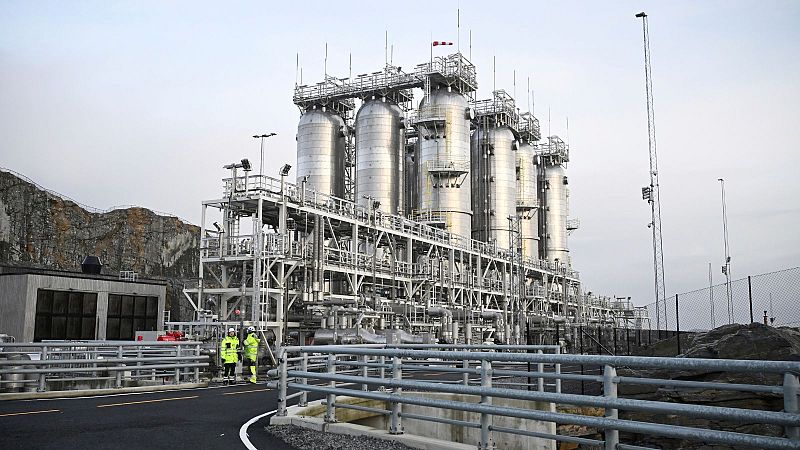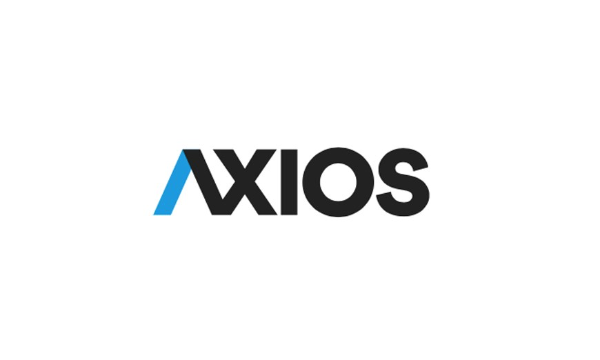
The European Union is betting on carbon capture and storage (CCS) to decarbonise heavy industrial emitters.
The bloc has set ambitious capacity targets to that end: 50 million tonnes of CO2 annually by 2030, rising to 280 million tonnes in 2040. But this will require a huge scaling up.
CCS involves capturing CO2 from industrial emitters or power factories, liquefying it, and transporting the CO2 via pipeline, trucks or ships before storing it underground in depleted oil or gas reservoirs or saline aquifers.
Today, there are only five operational CCS projects in Europe, capturing a total of 2.7 million tonnes of CO2 (MtCO2) each year. Of this,1.7 MtCO2 (63 per cent of the total) is for natural gas processing in Norway, which is outside of the EU.
So the strategy requires building a complex infrastructure network from scratch at significant cost. The European Commission has said Europe might need 19,000 km of CO2 pipelines by 2050 to meet this target.
These plans could cost taxpayers up to €140 billion by 2050, according to the Institute for Energy Economics and Financial Analysis.
But a joint investigation by several European newsrooms shows that recurring problems with high costs and technical issues are already threatening the success of three major CO2 transport and storage projects receiving EU support.
EU’s CCS-heavy climate strategy thrown into doubt
This questions the feasibility of the current EU climate strategy which heavily relies on carbon capture and storage, a technology favoured by oil and gas companies but which has largely historically failed to meet targets.
As of 2023, governments and corporations had spent over $83 billion (€73bn) on CCS projects globally, according to Bloomberg. But that same year, the technology only captured around 0.1 per cent of global emissions.
For Europe to reach its targets, capacity will need to expand dramatically. In its most recent round, 40 per cent of Emissions Trading System (ETS) revenues to the Innovation Fund were awarded to carbon capture storage and utilisation projects. The ETS is a major funding program for low-carbon technology financed by the bloc’s cap-and-trade system for greenhouse gas emissions.
This “one-track” focus could mean other decarbonisation tools - such as expanding clean energy and improving energy efficiency - are potentially being sidelined, according to a report by the World Wide Fund for Nature (WWF).
One example is cement, where Innovation Fund grants in all but one case support CCS to reduce emissions, rather than investigating means to reduce CO2 in the industrial process directly.
As part of a joint investigation by IRPI, Follow the Money, L’Humanite and Mondiaal Nieuws, we looked at three projects supported by the EU.
The projects analysed - Northern Lights in Norway, Pycasso in France, and Callisto in France and Italy - were only three of 14 projects selected by the European Commission as Projects of Common Interests (PCIs), but they point to issues facing efforts to scale CCS across the continent.
CCS projects hampered by high costs and unrealistic targets
Northern Lights in Norway, which expects to start operating this year, is run by three fossil fuel companies: Total Energies from France, UK-headquartered Shell, and Equinor, which is majority owned by the Norwegian state.
It plans to store 1.5 million tonnes of emissions within a few years, starting with emissions from fertiliser producer Yara, Danish energy company Orsted and cement company Heidelberg Materials.
But an investigation published in Follow the Money shows the project will face prohibitive costs and shipping capacity issues.
Northern Lights will rely on two specially designed ships which will collect and transport liquefied CO2 captured by polluters in Denmark, the Netherlands and Norway. It will then be shipped to the port in Øygarden – located west of the city of Bergen – and pumped via a 100-kilometre pipeline into geological reservoirs under the seabed in the North Sea, where it is intended to be stored permanently.
Transporting and storing one tonne of CO2 under phase one of the Northern Lights project would have an average cost of $145 (€128), according to data analytics company Wood Mackenzie.
In addition to these expenses, there is the cost of capturing CO2 on-site, which differs by industry. Estimates from the International Energy Agency (IEA) suggest average costs per tonne of $30 (€27) for ammonia, a compound primarily used in fertiliser production.
Under these estimates, Yara might have to pay between $140 to $202 million (€123 to €178 million) every year to reach its targets to reduce only a proportion of emissions from one site. That’s a significant amount for a company that posted $229 million earnings before interest, taxes, depreciation, and amortization in Europe last year.
Northern Lights faces other challenges. The project will rely on ships to transport CO2, but specialised boats are required to transport CO2, and with only two such ships built and available, the project will likely struggle to meet its own targets. Each ship can only carry 8,000 tonnes of CO2 per trip.
Under existing contracts, Northern Lights will receive 1.63 million tonnes each year to store.
Northern Lights has now commissioned two further liquefied CO2 ships which are due to be completed in 2026, though it is not clear when they will start transporting emissions. Even with all four ships in service, more will be needed soon as the project expands, the investigation found. Any delays from bad weather or technical difficulties with ships will further jeopardise the project’s ability to meet targets.
Transporting CO2 either by ship or pipeline raises further issues. Unlike natural gas, CO2 becomes corrosive when mixed with water. The ship’s storage tanks need to be cleaned with dry CO2 gases to avoid any contamination with humid air, every time after unloading.
Italian project also faces 'prohibitive costs'
Another project, Callisto, which aims to transport CO2 from industrial emitters in France to a storage site off Italy’s Adriatic coast, faces similar issues.
Callisto, a joint venture by Italian energy multinational Eni, infrastructure company Snam and Air Liquide, a French company providing oil and gas services, aims to create the largest multimodal carbon capture and storage network in the Mediterranean.
The project seeks to create a complete supply chain for the capture, transport and storage of carbon in southwestern Europe.
But while Callisto plans to transport CO2 from industrial clients in Italy via pipeline, emissions from French companies will be transported via ship from southeastern France circumventing the Italian peninsula to the Adriatic, Irpi media reported.
The construction and maintenance of dedicated infrastructures, such as pipelines and ships, along with transport and capture costs, represent a significant investment.
The current price paid by polluters under the Emissions Trading System (ETS) is around €80 per tonne, too low to justify a business case for companies to pay for CCS. "Even with equal unit capture costs, transport from very distant sources would have prohibitive costs, difficult to reconcile with the current values of ETS certificates," Roberto Bencini, an expert on CCS for the European Commission, told IRPI media.
ETS prices are not just low but also volatile, meaning transport costs could quickly make storage costs prohibitive, putting the profitability of projects at risk.
“The problem is more so that the price is volatile. So no one's going to make an investment for 15 years unless they have some form of a guarantee of what the price is going to be,” says Eadbhard Pernot, Secretary-General of Zero Emissions Platform (ZEP) initiative, which includes many oil and gas companies involved in European CCS projects.
Those projects which have gone ahead rely on carbon contracts for difference - agreements where a government contracts with a company to guarantee a specific carbon price over a set period for a low-carbon project - says Pernot.
Local opposition to CCS projects
Finally, France’s Pycasso project shows a different, but equally pressing issue for CCS infrastructure.
By storing CO2 closer to industrial emitters, Pycasso pursued a strategy that could have lowered costs. But the project was abandoned last year because of local opposition: as one MP told L’Humanite, Pycasso would have threatened the 1,700 jobs at the existing gas field in Lacq, while creating only around 80 new jobs.
For CCS advocates, the economic challenges facing CCS are a sign it should receive more public money. “We are trying to get a new technology up and running on a commercial scale. And there are risks here which the private sector will probably not take, unless governments agree to provide some sort of de-risking support,” says Chris Davies, head of CCS Europe.
But critics argue Europe risks betting on CCS as a miracle solution at the expense of harder choices about resource use and changing patterns in industrialisation.
“It’s an example of how we are relying above all on technology to reduce emissions. That can’t be the only solution. It can be part of the packet, but it should not have the emphasis it is receiving right now,” Maury says.
With issues around economic viability and feasibility issues, some fear the focus on CCS could distract from meaningful climate action.
“The biggest risk with CCS is we waste a decade and however many billions of euros not doing climate action that we know would work,” Rachel Kennerley of the Center for International Environmental Law told Euronews Green.
Additional reporting from Carlotta Indiano, Beatrice Cambarau, Bart Grugeon Plana, David Haas, Jule Zentek, Simon Guichard.








